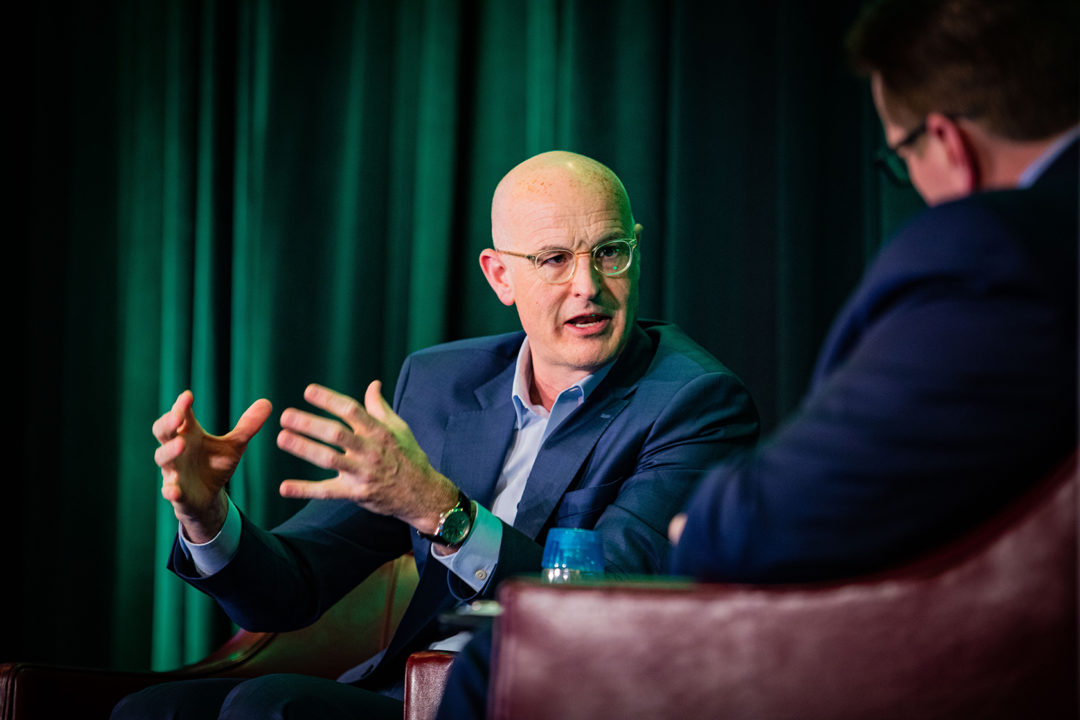
FS19 Recap: Keurig Dr Pepper CCO Derek Hopkins
Sees No Dr Pepper Move from KO, PEP; Opportunity in Energy, Hydration; Strong Allied Brand Strategy.

Dr Pepper. When asked if KDP would look to take over more of its US Dr Pepper distribution from partners such as Coca-Cola and PepsiCo, Hopkins said, “We are very pleased with the relationships we have with both Coke and Pepsi, and those organizations are performing very well with Dr Pepper.” He said Dr Pepper’s share growth has been helped by marketing and advertising investment from KDP, as well as prioritization of the brand by the Coke and Pepsi distribution systems.
Growth categories. Hopkins said “energy” and “hydration” show the most promise for ready-to-drink growth currently. “From a consumer standpoint over the last number of years, energy has broadened from a very similar type of energy drink to something that consumers look at more broadly, including coffee,” he said. “They are looking at the functionality of energy versus just the type of energy.” Hopkins said KDP also is interested in the fact that energy is growing in the convenience channel, which means KDP has room to grow in the channel. KDP has been developing its ready-to-drink coffee business with brands such as Peet’s and its canned energy portfolio with recently acquired Adrenaline Shoc. When it comes to hydration, Hopkins said the water category can be segmented into everything from premium sourced brands like Evian to enhanced versions such as Core, and now energy water with added caffeine. “That’s an interesting space,” he said. Looking out three to five years, Hopkins expects retail channels to blur, categories to fragment as coffee has, and for personalization to take hold of the consumer.

Keurig Connect. Hopkins said KDP’s Keurig Connect program now collects voluntary in-home data from approximately 14,000 homes by way of connected Keurig brewers. “We understand exactly the brand they’re brewing, the time of day, the [cup] size, whether they used any type of strength button, and the brewer mechanics,” he said. “It’s really the first in-home consumption data that exists for a CPG company.” The data is married with IRI household data and the resulting insights are provided to KDP’s coffee partners such as Starbucks, Peet’s and Dunkin’. The project has led to regionalized variety packs, for example, Hopkins said. “The possibilities are endless,” he said. “If you get back to things around personalization, there is a lot that you can do with a connected device like that.”
Allied Brands. Hopkins said direct store distribution (DSD) partnerships with outside brands will continue to be important for KDP. “We will enter partnerships in two ways,” he said. “One, a path to purchase, where we have equity in the brand, and we have a path that’s predetermined to purchase that brand. Or if that’s not possible, a long-term relationship. That’s the way that we will enter partnerships as we go forward, and that’s the way that we’ve done it over the last 18 months.”
